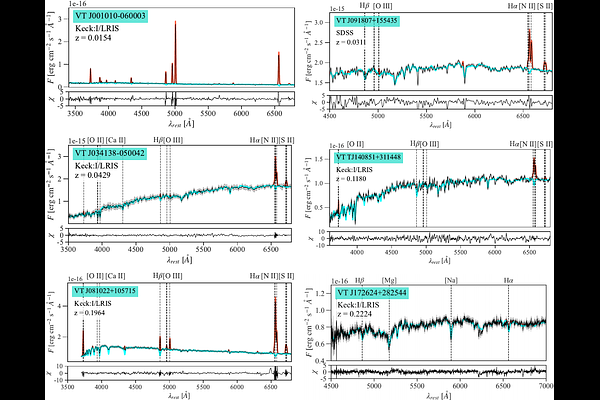Fast Luminous Extragalactic Transients in the VLA Sky Survey: Implications for the rates of Accretion-Induced Collapse Events, Fast Blue Optical Transients and Gamma Ray Burst Afterglows

Fast Luminous Extragalactic Transients in the VLA Sky Survey: Implications for the rates of Accretion-Induced Collapse Events, Fast Blue Optical Transients and Gamma Ray Burst Afterglows
Kritti Sharma, Vikram Ravi, Dillon Z. Dong, Gregg Hallinan, Casey Law, Delina Levine, Jean J. Somalwar, Jessie Miller, Nikita Kosogorov, Steven T. Myers
AbstractRadio wavelengths offer a unique window into high-energy astrophysical phenomena that may be obscured or too rapidly evolving to be captured at other wavelengths. Leveraging data from the Very Large Array Sky Survey, we perform a systematic search for fast, luminous transients with characteristic timescales $\lesssim 3$ years in the nearby universe ($z \leq 0.3$). We report the discovery of five such transients, and classify them based on their synchrotron emission energetics and host galaxy properties. From this sample, we derive observational constraints on the volumetric rates of certain corresponding transient classes. We limit the rates of accretion-induced collapse of white dwarfs with dense circumstellar medium interaction (and those producing pulsar wind nebulae) at $\lesssim 1.10_{-0.90}^{+2.60}$% ($\lesssim 0.20_{-0.10}^{+5.80}$%) of the local Type Ia supernova rate, respectively, broadly consistent with theoretical predictions. For AT2018cow-like radio-bright luminous fast blue optical transients, we estimate a rare occurrence rate of $\lesssim 0.02_{-0.01}^{+0.32}$% of the local core-collapse supernova rate. We constrain the local volumetric rates of long- and short-duration gamma-ray bursts (GRBs) to be $\lesssim 11.46_{-9.48}^{+26.28}$~Gpc$^{-3}$~yr$^{-1}$ and $\lesssim 80.88_{-66.90}^{+185.87}$~Gpc$^{-3}$~yr$^{-1}$, respectively. These estimates incorporate beaming corrections, with median detectable viewing angles derived from afterglow simulations of $\sim 0.4$ and $\sim 0.3$ radians for long- and short-duration GRBs. Our findings highlight the potential of radio surveys to uncover rare, energetic transients. We emphasize the critical role of coordinated multi-wavelength follow-up in fully characterizing these enigmatic events.